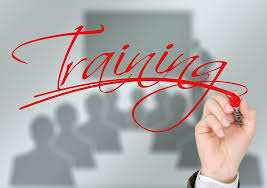 It’s almost November-often a time when companies focus on budgeting for the next fiscal year. What about training and development? As a consultant and coach, I often hear: “We’ve spent lots of money on training, and after it’s done, nothing has changed.” If this sounds familiar, you’re not alone. In the October 2016 issue of the Harvard Business Review, the problem is explored in “Why Leadership Training Fails and What to Do About It.” If you are planning to invest in training and human development, read on.
It’s almost November-often a time when companies focus on budgeting for the next fiscal year. What about training and development? As a consultant and coach, I often hear: “We’ve spent lots of money on training, and after it’s done, nothing has changed.” If this sounds familiar, you’re not alone. In the October 2016 issue of the Harvard Business Review, the problem is explored in “Why Leadership Training Fails and What to Do About It.” If you are planning to invest in training and human development, read on.
“U.S. corporations spent $365 billion in 2015 on employee training and education, yet without a good return on investment. Three-quarters of the nearly 1,500 senior managers at 50 organizations interviewed in 2011 by CEB were dissatisfied with their companies’ learning and development function. Only one in four reported that it was critical to achieving business outcomes. Decades’ worth of studies show why it isn’t working, but, sadly, that understanding has not made its way into most companies.” What’s going on here and what can be done?
Training rarely works. This is because without changing the context in which people work, it’s difficult for them to put what they learn into practice. Also, as a coach, I have also observed that without a means to support behavioral change, including conversations, actions and accountability, it is rare that people can successfully implement concepts learned in training.
The article cites research performed by Amy Edmondson of HBS and Anita Wooley of Carnegie Mellon—showing that “organizations need “fertile soil” in place before the “seeds of training interventions can grow.”
Organizations are complex systems of “interacting elements.” “All those elements together drive organizational behavior and performance. If the system does not change, it will not support and sustain individual behavioral change-indeed it will set people up to fail.”
 The authors identified the following six common barriers to change:
The authors identified the following six common barriers to change:
- Unclear direction on strategy and values, which often leads to conflicting priorities;
- Senior executives who don’t work as a team and haven’t committed to a new direction or acknowledged necessary changes in their own behavior;
- A top-down or laissez-faire style by the leader, which prevents honest conversation about problems;
- A lack of coordination across businesses, functions, or regions due to poor organizational design;
- Inadequate leadership time and attention given to talent issues;
- Employees’ fears of telling the senior team about obstacles to the organization’s effectiveness.
Time and time again I’ve seen these issues presented in organizations with whom I have worked. Getting to the solution for the problem requires digging deep, and often backtracking to put these fundamentals in place. It’s not exactly sexy stuff, but when done well, things begin to quickly change.
Next week we’ll show you how and what will work.

